| the 2011
Wayfarer Midwinters Friday: race 3 pics - 1 by Jim Orth ... |
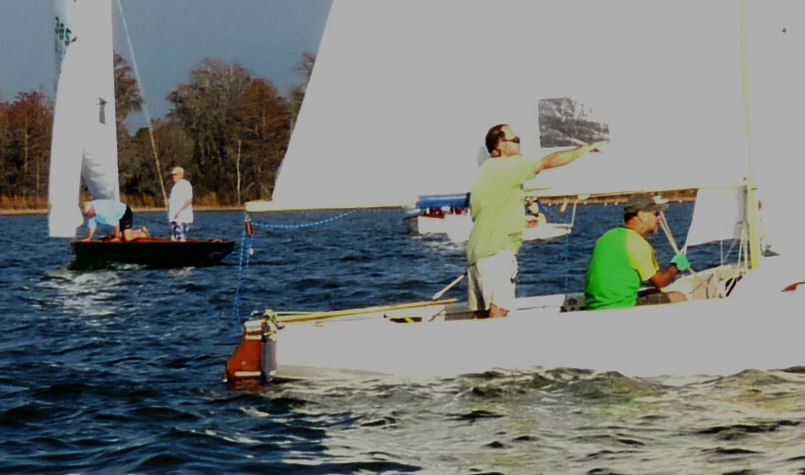 |
| The countdown for today's
third and final race is underway. Jimmy Mac has found the
windward mark. ... |
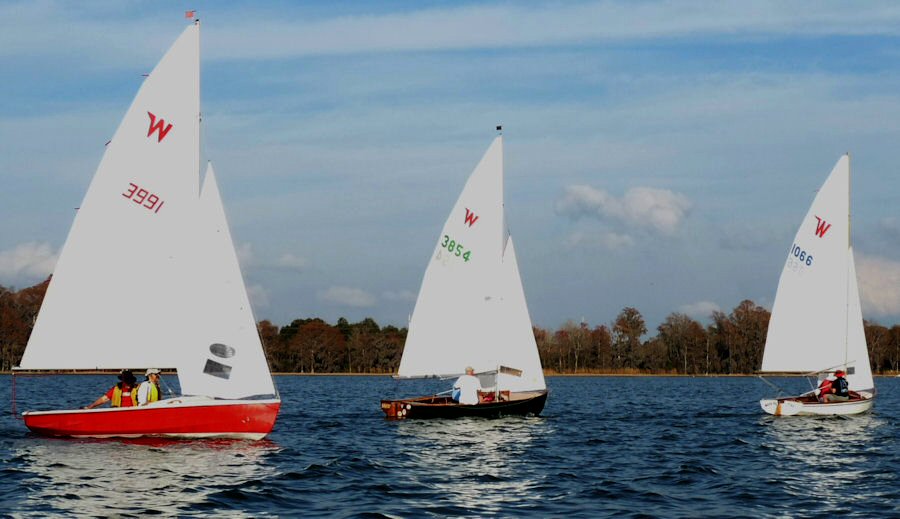 |
| Well under one minute to
the gun: It comes back to me now. In the final minute or
so, the wind died down a fair bit and backed nearly 40°, making it ... ... |
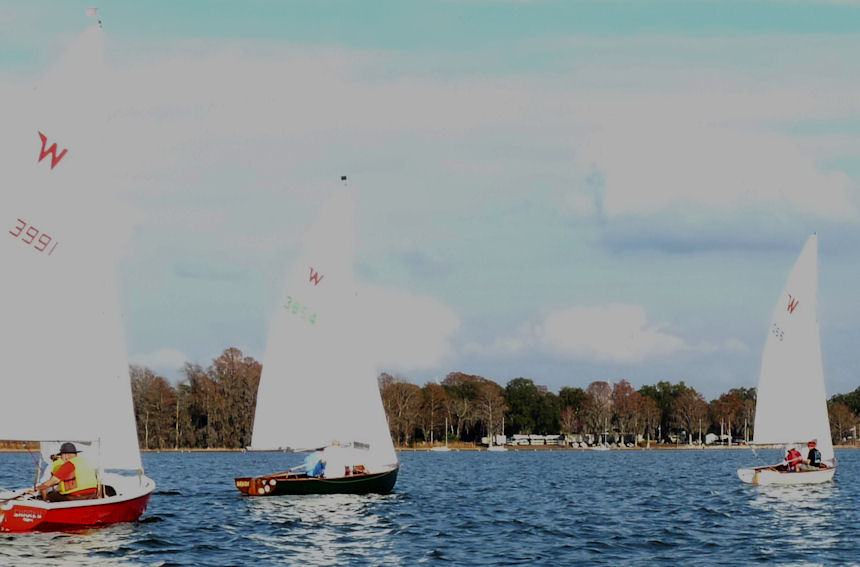 |
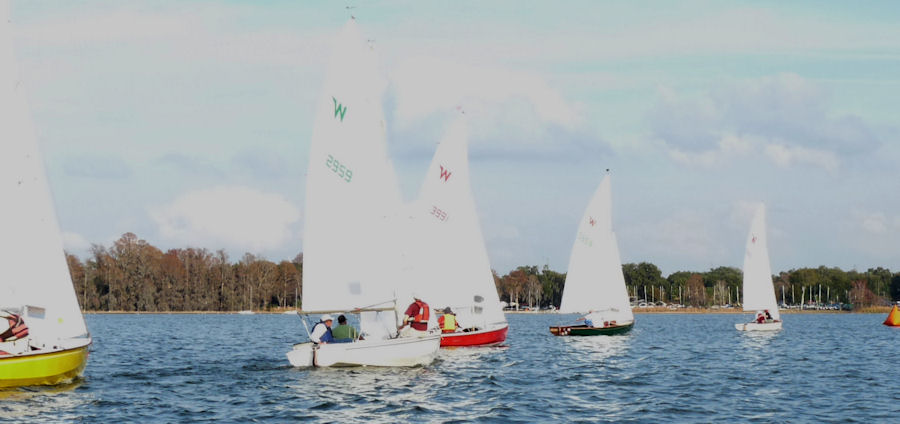 |
|
... a challenge to cross
the line on starboard and therefore favouring the pin
end hugely. Leading the parade along the line, in order,
are Jim H, Uncle Al, Jim L, Mike Murto and Richard S.
This shift means two things to Uncle Al: 1. he can
safely tack to cross Jim L 2. port tack, as
it now stands, will let you nearly lay the windward
mark. Other things being equal (e.g. wind strength
across the course, current or lack thereof, etc.), it is
always safer to take the longer tack first. To me, other
things are nearly always equal and I therefore disregard
those other things 99% of the time. The other 1% is when
I am fairly certain that going against the odds will pay
off, virtually always because I can see better breeze
over where I would otherwise hesitate to go. Of course,
sailboat racing being what it is, there are no
guarantees, but more of this a couple of pics from now
where I can use the illustration.
...Here, Tony's countdown has reached one second to do, Al has put the helm down and, along with Richard J (yellow hull), is the first to ... |
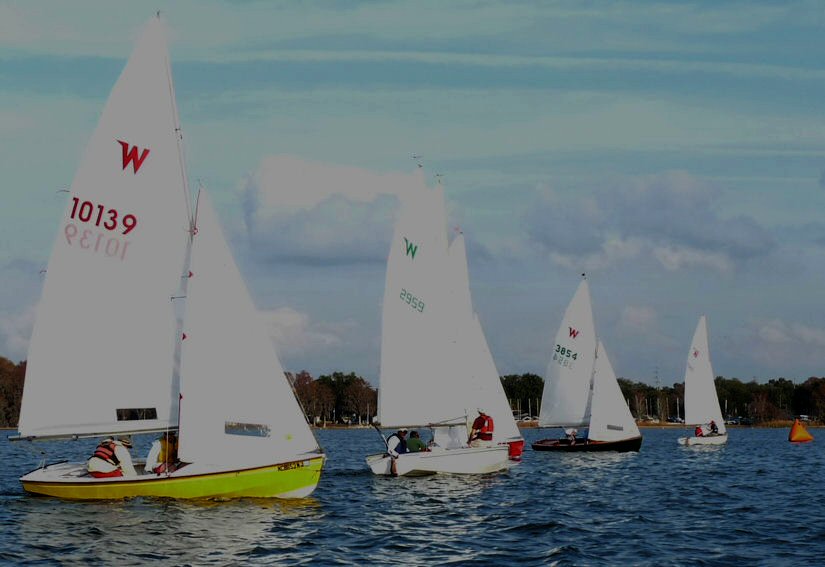 |
| ... go off on port tack.
- click here for larger image ... |
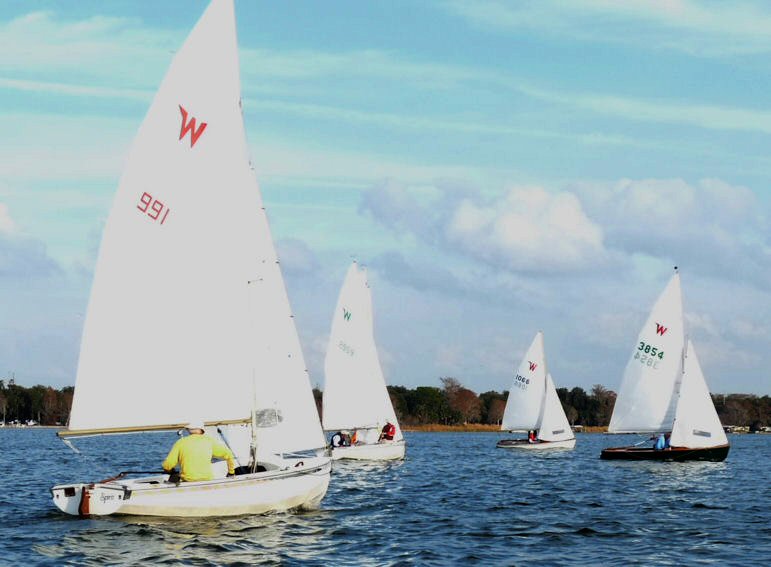 |
|
Jim H. has followed
suit. Why does it pay to take the longer tack first, you
may be wondering. This was an extreme shift and is thus
very useful to illustrate what I mean. On a beat (and
elsewhere) it is always wise to keep one's options open,
i.e. the ability to usefully sail on either tack. Once
you reach a lay line that ability has, barring an act of
God, ended. When the beat becomes as skewed as this one
suddenly has, both Jim (1066) and Al (3854) are either
laying the windward mark or very close to it. Let us
assume as a teaching point, that Jim is laying the mark.
That means he is out of useful options since he cannot
usefully tack to starboard. Here that will not bother
Jim because he is in the lead. But we are not
always in the lead and our racing strategy has to assume
we may well not be leading. Imagine for a moment that
this is further into the beat and that a starboard boat
now comes across and tacks. If he tacks in front of Al,
Al can usefully tack to clear his air since he won't
reach the lay line until he gets to where Jim is. If the
starboard tacker goes across an sits on Jim, however,
any time Jim spends on starboard is distance wasted
since he was already laying the mark. And even in the
reality of this situation, with no one able to come
across and sit on Jim's wind, Al is still in good shape.
Jim may have the lead right now, being more to windward
than Al is ahead, but, other things being equal (here,
both boats get the same wind strength and direction -
which is never a given but deviations can't usually be
planned for - trying to will drive you nuts - so it's
best to ignore those random factors and stick to playing
the odds), the wind can do one of three things: two of
these will benefit Al and one will not benefit either
boat:
...1. the wind does not change direction > neither boat gains (assuming equal speed and pointing which we always have to do or strategy discussions become meaningless!) 2. the wind backs further and lifts both boats, let us say 10°. Usually this benefits the windward boat (Jim) as he lifts inside of Al. But here, Jim is already laying the mark so all this shift does for him is let him foot off a bit and gain a tiny bit of speed. Meanwhile that lift has enabled Al to lay the mark, quite possibly to overlay it, so that now Jim's windward lead has become useless and it is a foot race to the mark > advantage Al 3. the wind veers back towards its original direction and knocks both boats, let us say 15°. Such a shift always benefits the boat that is to leeward and ahead, in this case Al. Both boats should of course tack on the header. But fairly soon, Jim will reach the new (because of the shift!) port layline and have to tack back if he knows what's good for him. Depending on the magnitude of the shift, Al may have gained enough to cross Jim or at the very least should be able to throttle Jim with a nasty lee bow. Either way, Jim is now faced with the dilemma mentioned earlier. If he tacks to starboard off the layline, all the distance sailed on starboard is essentially wasted - except insofar as it clears his air > advantage Al So this is why you sail the (appreciably!!) longer tack first, and in fact, every beat eventually degenerates into this kind of situation as we get close to one lay line or the other. It is best to keep the useful options intact by avoiding the lay lines as long as is reasonably feasible. See also To Tack Or Not To Tack, That Is the Question |
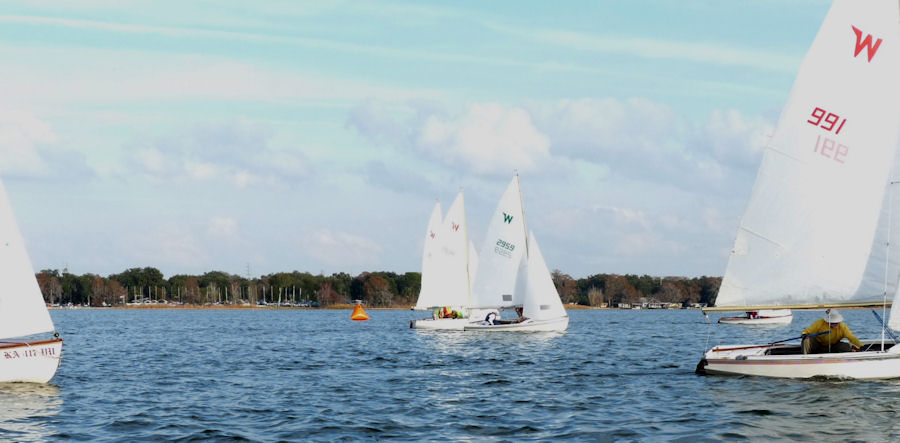 |
| Meanwhile, back in the
race, pretty much everyone has tacked to port in short
order. No dummies here! ... |
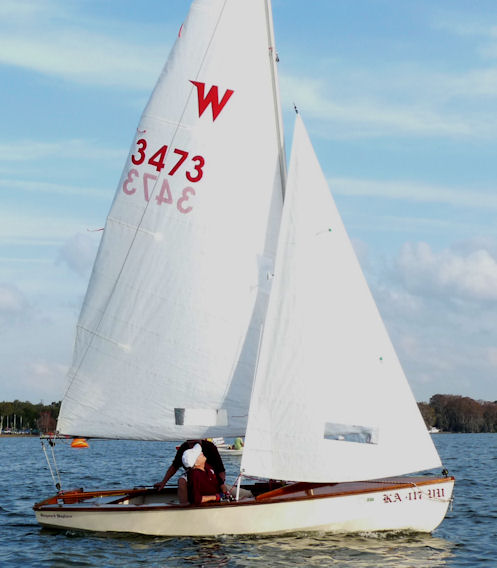 |
| Are the battens too ... ... |
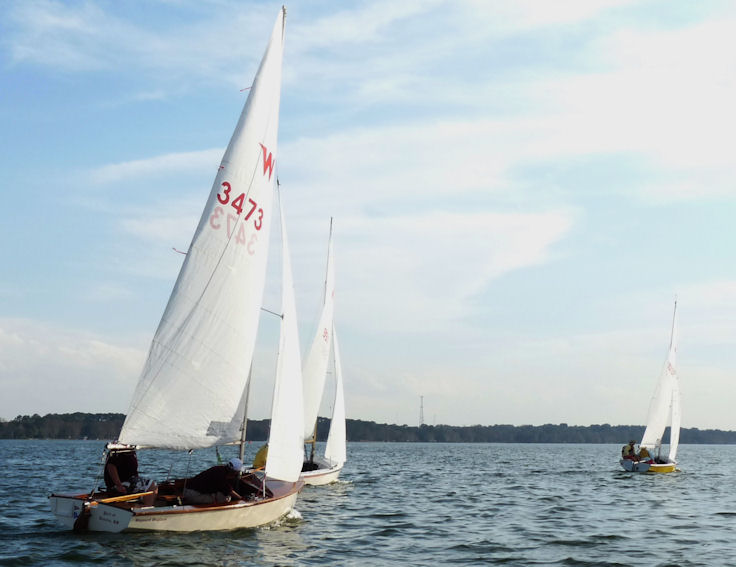 |
| ... short here? Look at the
leech curl!! ... |
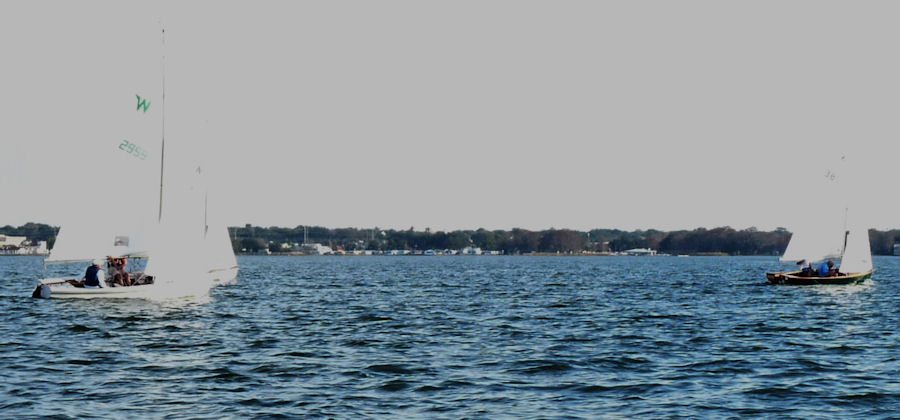 |
| The breeze is picking up a
bit once more but we have had no further shifts. Leeward/ahead is Uncle Al's comfort zone. Note how he and Tony (r) are ... ... |
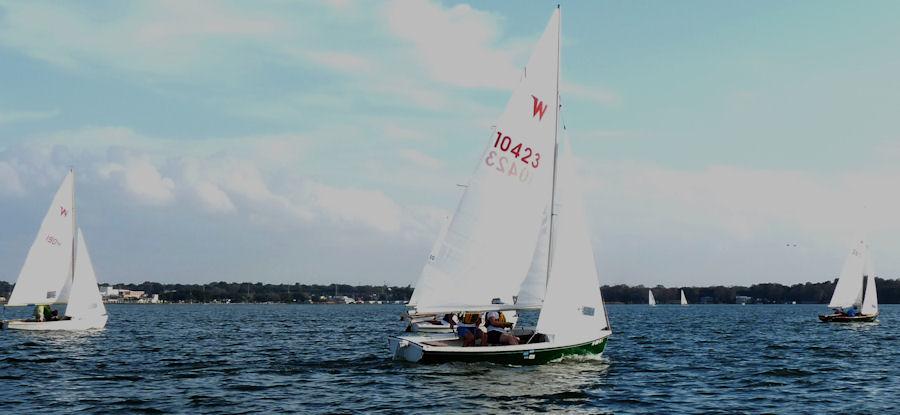 |
| ... pulling ahead. ... |
 |
| And a lovely little breeze
it is!! -
click here for larger
image ... |
 |
| Getting close to the
windward mark, it's Uncle Al (r) who is ... ... |
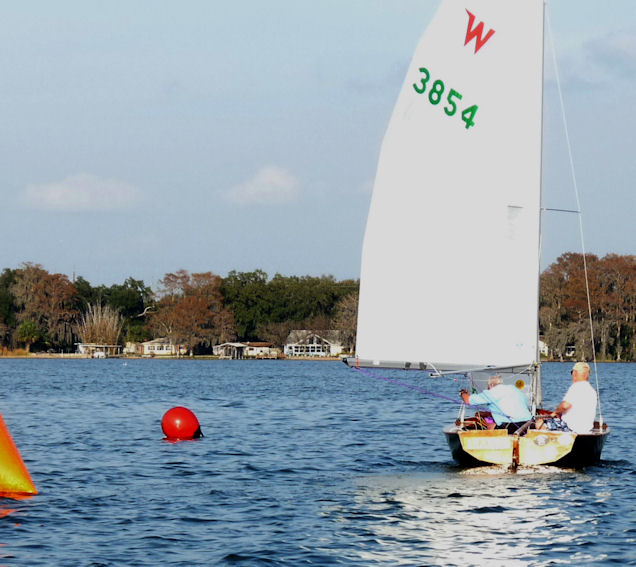 |
| ... first around, followed
very closely by ... ... |
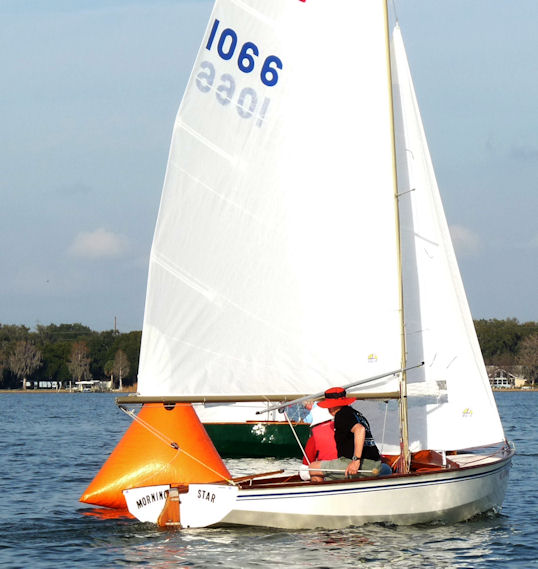 |
| ... Jim Heffernan. ... |
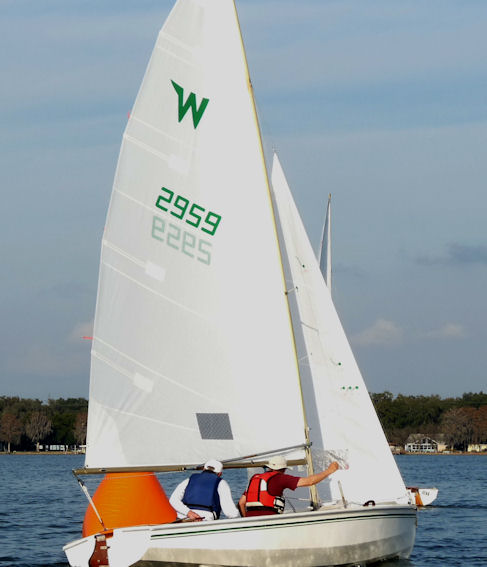 |
| It has been a fine first
beat for Mike and Andy who round 3rd with a slight edge
over ... ... |
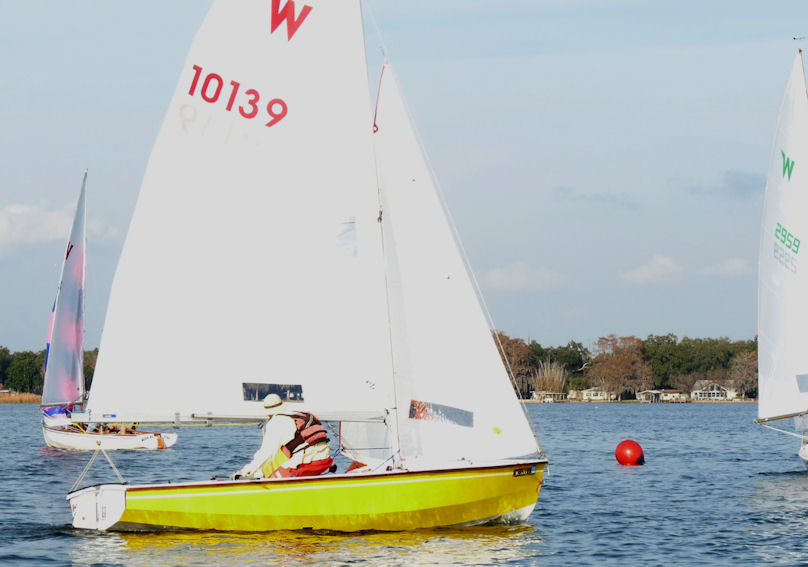 |
| ... Richard and Michele. ... |
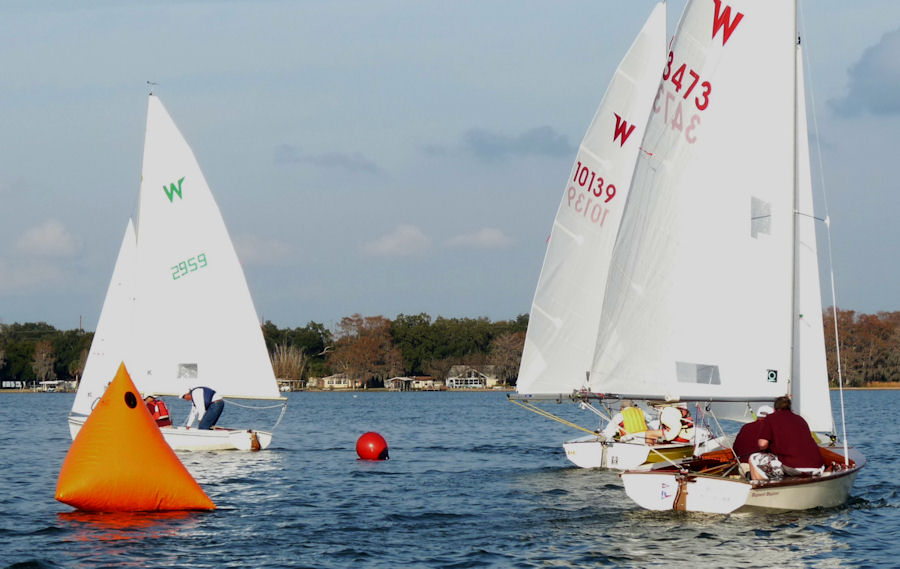 |
| Leech curl and all, Pat
Baldwin and Ed Rojohn round a very respectable 5th. |
| next pics page return to Mids 2011 index |